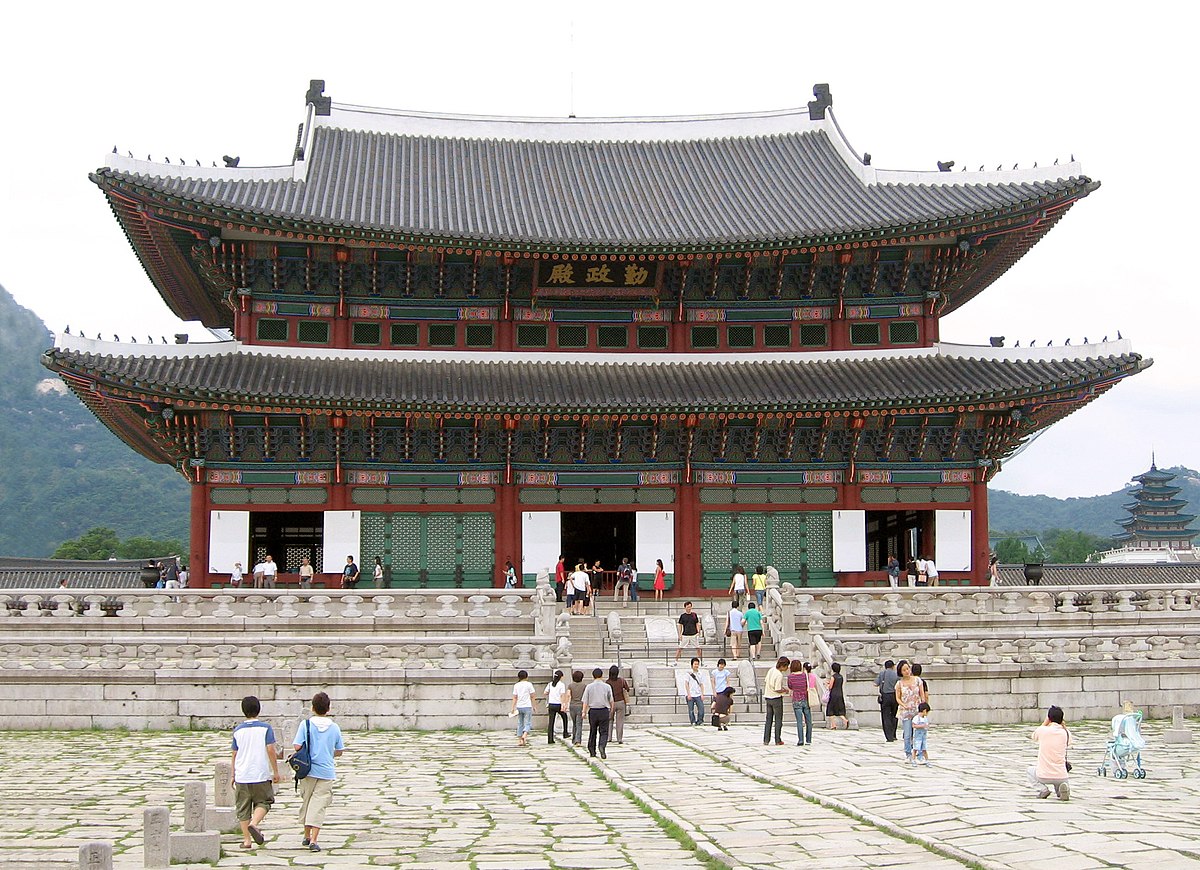 | ||
Palaces of Korea is an architecture of palaces built during the reign of kingdoms and dynasties in ancient Korea. Although the palaces of Korea followed the ancient Chinese principles, Korea has maintained an independent culture for 2000 years, thus resulting in various differences. Korean people still preserved the original element in their architecture that shows no similarities to China or Japan.
The kingdoms in Korean history have been build capital cities and palaces started from 1 BC, but its forms were unknown. The palaces of Gojoseon (2333 BC-250 BC) can not be traced at all. The palaces of Three Kingdoms can be imagined, mainly from some historical records and sites. The earliest evidences that show the concrete Korean architecture can be explored from the architecture of Gaegyeong, the capital of Goryeo Dynasty.
Principles of ancient China
According to the Rites of Zhou ("Zhouli") containing the ways and principles to build an ideal nation, a city has to be square and walled. Each of its 4 sides has 9 li long (1 lis is measured 0,4 km). Three roads stretched from north to south are crisscrossed with 3 roads stretched from the east to the west. Each side is guarded with a gate. The palace where king lived is placed in the center with the ancestors shrine on the left and the grain and earth altar on the right. Court and market is placed in front of and behind palace respectively.
The ancestral shrine is a place where the king and his family honor their forefathers. In the altar of grain and earth, the sacrificial rites were conducted to ask for a bountiful harvest every year. The arrangement of ancestor shrine and sacrificial altar on each sides of the palace symbolized the patronage from ancestor and heaven to the king. Meanwhile, the court location symbolized the nation's interest must be preferred by the ministers. The market symbolized the people contributing in trading.
According to Zhou Rite, city and palace are protected by interior wall (gungseong) and exterior wall (hwangseong). Many cities built following the Zhou principles were protected with 3 layers of mighty wall with the palace in the center. The outer wall surrounded the offices and citizen's homes. The famous cities followed this principles are Chang'an, capital of Tang Dynasty (6th C) and Beijing, capital of Ming Dynasty (14th C) in China. In Japan Heijokyo (Nara) was modeled from Chang’an in smaller scale.
